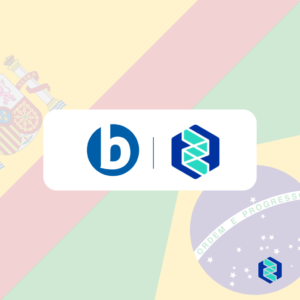Industries that deal with regulated products need the greatest possible safety in their processes and for their equipment to function properly and at highest performance. To guarantee this, the equipment qualification is essential.
In this article we’ll explain what it is, what it’s for and what the steps of qualification are.
What is equipment qualification?
Equipment qualification involves a series of actions aimed at guaranteeing and documenting that all equipment, systems and installations work as expected and meet the necessary standards in accordance with current regulations and guidelines.
Equipment qualification exists to prove that the equipment works, is reliable and operates properly.
Who needs a qualification?
The qualification of equipment is a requirement for all highly regulated industries, such as healthcare, pharmaceuticals and others. The pharmaceutical industry in particular works under the guidelines of RDC 658/2022 and IN 138/2022.
The importance of qualification
When it comes to regulated industries, every process and piece of equipment needs to be rigorously tested and qualified. This is because any fault in the handling and storage of these products can have serious implications for their efficacy, quality and safety.
In these industries, even a small flaw can put the health of consumers at risk, which is why the entire process needs to be well documented and managed, from start to finish.
The equipment involved in manufacturing, storing and transporting products in regulated industries needs to be qualified to ensure that it is all fulfilling its functions as expected.
Advantages of making equipment qualification
In addition to complying with legislation and ensuring the quality, efficacy, and safety of products, equipment qualification brings several benefits to the companies that undergo this process:
Preventive maintenance on equipments
As equipment qualification is necessary and periodic, it is not uncommon to identify potential equipment problems before they occur, which proves to be highly beneficial. Preventive maintenance is more cost-effective than corrective maintenance, allowing the company to conserve resources by ensuring the proper execution of the qualification process.
Less downtime for the plant
Just as preventive maintenance saves money, it also saves time. Few things are worse for an industry than idle time, as having the plant stopped can be very costly.
Effective quality control
Ensuring quality is a challenge, requiring well-defined processes and constant attention to the production chain, including equipment. Equipment qualification helps guarantee the quality of all products regularly and ensures that each part of the chain is fulfilling its role.
Infrastructure improvements
It may occur that, during a periodic qualification, the team identifies equipment that is no longer suitable for the company’s needs and must be replaced. This possibility of updating, in addition to pragmatic purposes, encourages the company to modernize and secure a competitive position in the market.
The steps of qualification
Do you know the steps of equipment qualification? This process is very complex and involves everything from the General Qualification Plan, User Requirements, Factory and Field Acceptance Tests, Project Qualification (QP), Installation Qualification (QI), Operation Qualification (QO) and Performance Qualification (QP). Let’s talk about each of them in detail:
URS
The URS stands for User Requirements Specifications. This document includes all the buyer’s requirements for the purchase of new equipment, detailing both technical and operational information.
Qualification Plan
This is one of the key aspects in qualifying equipment. This document outlines the equipment qualification project, providing a comprehensive overview of the schedule, responsibilities, and scope of the process.
TAF
TAF, also known as FAT, stands for Factory Acceptance Test. This step in equipment qualification occurs at the supplier’s factory before the new equipment is delivered to the industry. Its purpose is to ensure that the equipment aligns with the project requirements.
TAC
After the TAF comes the TAC, which stands for Field Acceptance Test. This step is similar to the TAF but is conducted after the new equipment has been delivered and installed. Its purpose is to determine whether the equipment indeed complies with the project specifications.
Project Qualification (QP)
QP provides and verifies documentation to ensure that equipment qualification is integrated into the project and that the purchased equipment aligns with the User Requirements Specifications (URS) in terms of product quality.
Installation Qualification (QI)
The purpose of the QI phase is to certify and document that the installation process for any equipment has been executed correctly and meets pre-established standards. This step is undertaken whenever there is a new acquisition, modification, or significant maintenance of equipment.
Operation Qualification (QO)
The Operation Qualification is conducted to certify that the equipment is operating correctly and meets the necessary requirements. The results need to be properly documented to ensure the integrity of the products.
Performance Qualification (QP)
Finally, QD checks that the equipment’s performance remains stable and optimized after a period of operation. The key word here is periodicity because it is not enough for the equipment to pass all the qualification steps if this standard is not maintained.
All steps of equipment qualification are essential to guarantee a good final result. Without them, the quality of products in regulated industries is put at risk.
At Organex, we work to offer solutions in equipment qualification and various other sectors, such as:
- Structuring the systems validation area;
- Mapping and elaboration of user requirements;
- Validation of information systems;
- Validation of automation systems;
- Validation of electronic spreadsheets;
- Qualification of systems and services suppliers;
- Qualification of the IT infrastructure;
- Gap assessment of bpx software;
- Audit;
- Drawing up functional and technical specifications;
- Training;
- Allocation of professionals.
Find out more about Organex’s work in equipment qualification by clicking here!



